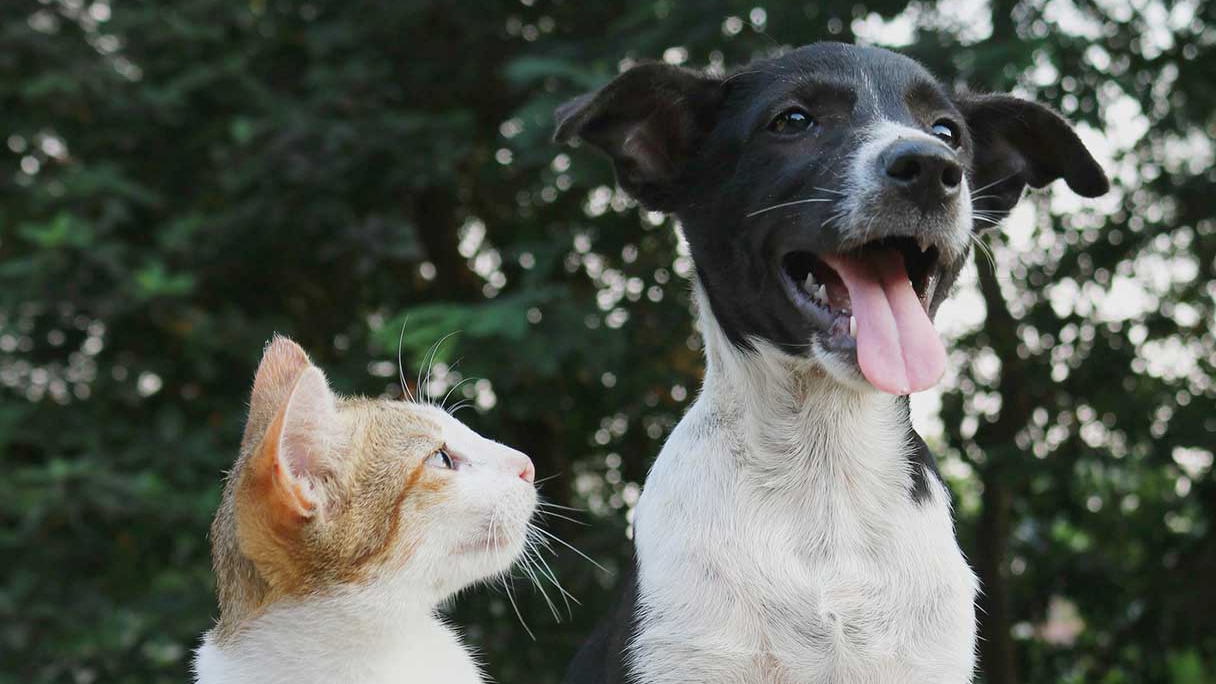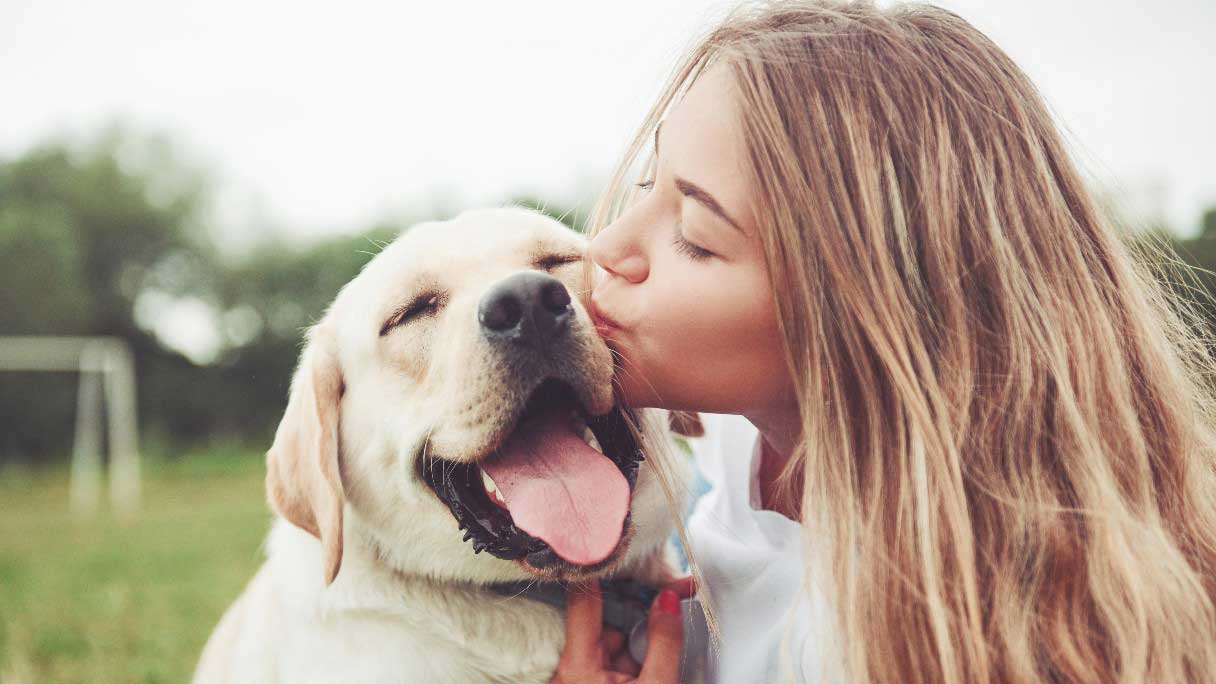You’ve likely noticed that when you take your dog to the veterinarian for a wellness check, the doctor will examine your dog from nose to tail, including taking a look inside your pup’s mouth.
Even if your dog hasn't shown any trouble eating or sensitivity in their mouth, your vet might find an issue with a tooth and recommend further examination under anesthesia. In some cases, this could lead to a recommendation for tooth extraction, especially if the affected tooth is causing pain, infection or other oral health issues.
Signs Your Dog May Need a Tooth Extraction
If your dog has a fractured tooth, an infection or retained baby teeth (persistent deciduous teeth), they may need a tooth extraction. These issues can cause pain, discomfort and difficulty eating. Older dogs are more prone to dental problems, but younger dogs can also experience fractures from chewing hard objects.
Signs that your dog may need a tooth extraction include:
- Bad breath (often a sign of infection)
- Bleeding or inflamed gums
- Difficulty chewing or dropping food
- Excessive drooling
- Pawing at the mouth or rubbing their face
- Swelling around the mouth or face
Most dogs are candidates for extractions unless they have health conditions that make anesthesia unsafe, such as congestive heart failure. Sometimes, your vet may refer you to a board-certified veterinary dentist who can perform advanced procedures like root canals and crowns. These specialists often have additional training, specialized equipment and an anesthesiologist on staff, making them a great choice for high-risk patients. Discuss your options with your vet to ensure the best care for your dog’s dental health.
How Much Does a Dog Tooth Extraction Cost?
The national average cost* for a simple dog tooth extraction is $130 per tooth, but the price ranges between $101 and $219.1 The cost will vary based on the complexity of the extraction. You’ll also have to consider X-rays, the cost of a dental cleaning (often recommended so that your vet has a clear view of each tooth), anesthesia and other factors.
Average cost for a dog tooth extraction
Here are the average costs* and cost ranges for the procedures involved in a dog tooth extraction:1
| Procedure | Average cost | Cost range |
|---|---|---|
| Dental X-rays | $133 | $102 to $237 |
| Routine dental cleaning | $270 | $210 to $503 |
| Tooth extraction (simple, per tooth) | $130 | $101 to $219 |
| Tooth extraction (complex, per tooth) | $385 | $301 to $691 |
The costs above include an exam but may vary based on:
- Anesthesia costs
- Number of teeth removed
- Pet insurance coverage
- Recovery and medications
- Size of your dog
- Vet and/or clinic fees
Calculate the cost of a simple dog tooth extraction near you

Explore procedure costs in your area
Average cost for a dog tooth extraction by state/district
Below is a breakdown of the average costs* for both simple and complex dog tooth extraction by all 50 states and the District of Columbia:1
| State/District | Simple tooth extraction (per tooth) | Complex tooth extraction (per tooth) |
|---|---|---|
| Alabama | $113 | $329 |
| Alaska | $160 | $466 |
| Arizona | $134 | $392 |
| Arkansas | $113 | $334 |
| California | $161 | $478 |
| Colorado | $132 | $386 |
| Connecticut | $134 | $402 |
| Delaware | $130 | $384 |
| District of Columbia | $178 | $462 |
| Florida | $129 | $384 |
| Georgia | $117 | $348 |
| Hawaii | $180 | $576 |
| Idaho | $132 | $389 |
| Illinois | $127 | $387 |
| Indiana | $116 | $342 |
| Iowa | $116 | $333 |
| Kansas | $115 | $339 |
| Kentucky | $117 | $350 |
| Louisiana | $119 | $365 |
| Maine | $132 | $385 |
| Maryland | $150 | $443 |
| Massachusetts | $154 | $496 |
| Michigan | $119 | $352 |
| Minnesota | $123 | $363 |
| Mississippi | $110 | $328 |
| Missouri | $115 | $336 |
| Montana | $127 | $376 |
| Nebraska | $117 | $347 |
| Nevada | $129 | $386 |
| New Hampshire | $141 | $406 |
| New Jersey | $146 | $408 |
| New Mexico | $116 | $343 |
| New York | $140 | $422 |
| North Carolina | $121 | $364 |
| North Dakota | $119 | $353 |
| Ohio | $119 | $354 |
| Oklahoma | $112 | $336 |
| Oregon | $142 | $405 |
| Pennsylvania | $126 | $370 |
| Rhode Island | $135 | $400 |
| South Carolina | $121 | $356 |
| South Dakota | $118 | $350 |
| Tennessee | $117 | $340 |
| Texas | $121 | $359 |
| Utah | $134 | $379 |
| Vermont | $138 | $410 |
| Virginia | $127 | $372 |
| Washington | $145 | $435 |
| West Virginia | $115 | $343 |
| Wisconsin | $123 | $359 |
| Wyoming | $120 | $363 |
Does Pet Insurance Cover Dog Tooth Extractions?
Pet insurance may cover routine dental procedures (like cleanings) and, in some cases, will cover more intensive procedures, including tooth extractions. Be sure to check your policy with your pet insurance company for specific coverage and limitations.2
How Does a Dog Tooth Extraction Work?
Just like humans, dogs have different-sized teeth that serve different purposes, so root extractions can range from simple (like with a deciduous tooth or tiny incisors in the front of the mouth) to very complex (like with a three-rooted carnassial tooth or molar). If your dog needs more than a few teeth extracted or several of their large teeth extracted, the procedure may be done in stages to allow for healing time and comfort in between.
If your vet suspects any tooth fractures or infections, your dog will likely need an anesthetic dental procedure. While under anesthesia, the veterinarian will take X-rays to get a better look at the teeth, their roots and the overall structure of your dog’s mouth. Unfortunately, even with the most well-behaved patients, vets can’t take dental X-rays without anesthesia, making it impossible to fully assess the extent of damage to your dog’s teeth. The veterinarian will call you after the X-rays and initial exam to discuss their findings and get approval on extractions and the next steps.
Preparation
To prepare for a dental procedure, your vet will likely require some preoperative tests, such as blood work, ECG or chest radiographs, to make sure your dog is as safe as possible to undergo anesthesia.
If your dog has a heart murmur, they may also need to have an echocardiogram done to assess the cardiac function. Special anesthesia monitoring may be necessary if your dog is at a higher predisposition.
Procedure
On the day of the procedure, your dog will need to fast, and they will likely spend the entire day at the vet’s office.
Before the tooth extraction, your pup will get a dose of pain medication, which will help them relax and feel more comfortable after the procedure. When it’s time to start, the medical staff will place an intravenous catheter to continuously provide your pup with fluids that will help with their blood pressure and keep them stabilized while under anesthesia. During anesthesia, machines will assist in monitoring your dog's heart rate, blood oxygen levels and blood pressure, but your veterinarian and their assistant will be monitoring your dog closely as well.
The process will typically begin with a cleaning, although sometimes teeth are extracted first so the remaining teeth can be cleaned properly. Before any extractions begin, your dog will receive local numbing blocks to help with pain relief before and after the procedure. Some extractions are larger than others, and many do require sutures to gently close the gum tissue. Don't worry — the stitches will dissolve on their own over time.
Additional pain medications are usually administered to keep your dog as comfortable as possible after the procedure, and the vet will keep your dog comfy at their office until he or she wakes up and is ready to go home.
Possible Side Effects of Tooth Extractions
When you pick up your dog, they may still be a bit groggy and not interested in eating. Your vet will likely advise a soft food diet for a few days to protect the incisions and until your dog is comfortable eating.
Your dog may experience some discomfort initially, so your vet will probably send you home with pain medications. They come in either pills or liquids to make it easier for you to give to your pup.
Most dogs do not need antibiotics unless they have an aggressive infection.
Recovery From a Tooth Extraction
Recovery can take one to two weeks, and your vet will evaluate their progress during the recheck examination. Not surprisingly, once your dog's mouth starts to heal, they will likely feel much better now that the infected or fractured teeth have been removed.
While the thought of your dog undergoing anesthesia may be daunting, addressing the problem tooth is essential — leaving it untreated could lead to chronic pain and recurring infections. Your veterinarian will assess your dog’s readiness for the procedure, provide careful monitoring throughout, and ensure proper care during recovery.
CareCredit Credit Card Financing for Dogs
The CareCredit credit card provides a convenient way to pay for your dog's vaccinations and other health and wellness expenses, including exams, medications and products at providers in the CareCredit network.** Continue your wellness journey by downloading the CareCredit Mobile App. You can find a provider on the go, manage your CareCredit account and easily access the Well U blog for more great articles, podcasts and videos. Use our Acceptance Locator to find a veterinarian that accepts CareCredit to help keep your pet healthy and happy for a lifetime of love.
In addition to pet care, you can also use your CareCredit credit card for dentistry, cosmetic, vision, hearing, health systems, dermatology, pharmacy purchases, spa treatments and so much more within the CareCredit network. How will you invest in your health and wellness next?
Author Bio
Dr. Kathy Wiederkehr (Wentworth) has been practicing veterinary medicine at pet care facilities in California since 2001. Most recently, she served as medical director of the VCA PetPoint Medical Center and Resort in Irvine. She is a graduate of the University of Pennsylvania School of Veterinary Medicine and became board-certified as a diplomate in Canine and Feline Practice by the American Board of Veterinary Practitioners in 2010.







